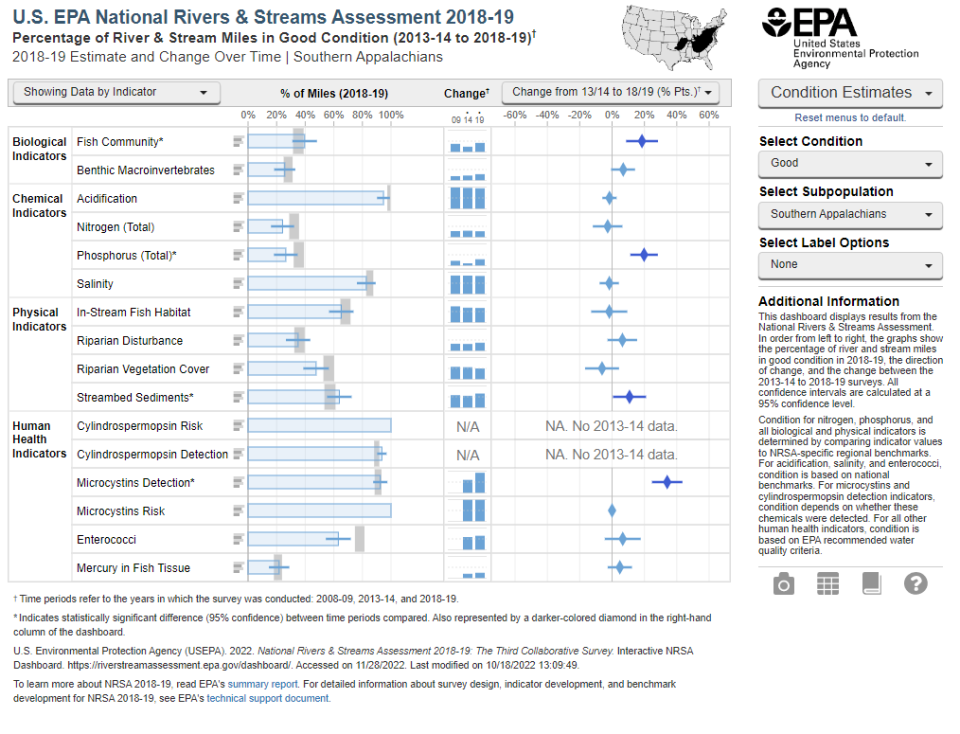Southern Appalachians Ecoregion - National Rivers and Streams Assessment Results
On this page:
Key Results
An estimated 377,546 river and stream miles are represented in the Southern Appalachians ecoregion in the National Rivers and Streams Assessment (NRSA).
- In the Southern Appalachians ecoregion, biological condition was in good condition in 26% of river and stream miles based on macroinvertebrates.
- The most widespread stressors assessed in the Southern Appalachians ecoregion were phosphorus with 56% of river and stream miles in poor condition, nitrogen with 48% of miles in poor condition, and riparian vegetation cover with 31% of miles in poor condition.
- Cyanobacteria are photosynthetic microorganisms that occur at low levels. Under the right conditions (elevated nutrients and increasing temperature), cyanobacteria can grow at elevated rates producing blooms. Not all cyanobacterial blooms are toxic, but some may release toxins, such as microcystins. For information about risks at specific locations, recreational water users should check with state, tribal or local governments.
- During the 2018-19 NRSA, microcystins detections occurred in 8% of river and stream miles in the Southern Appalachian ecoregion however, zero miles were above EPA’s recommended criteria.

Martin Creek, NC
Change from 2013-14*
- For the Southern Appalachians, the percent of rivers and streams in good condition for phosphorus increased by 20 percentage points between 2013-14 and 2018-19.
- The percent of river and stream miles with microcystin detections decreased by 34 percentage points.
To access more ecoregional specific information, please visit the interactive NRSA Dashboard.
* The change analysis is based on information from two points in time – 2013-14 and 2018-19.

